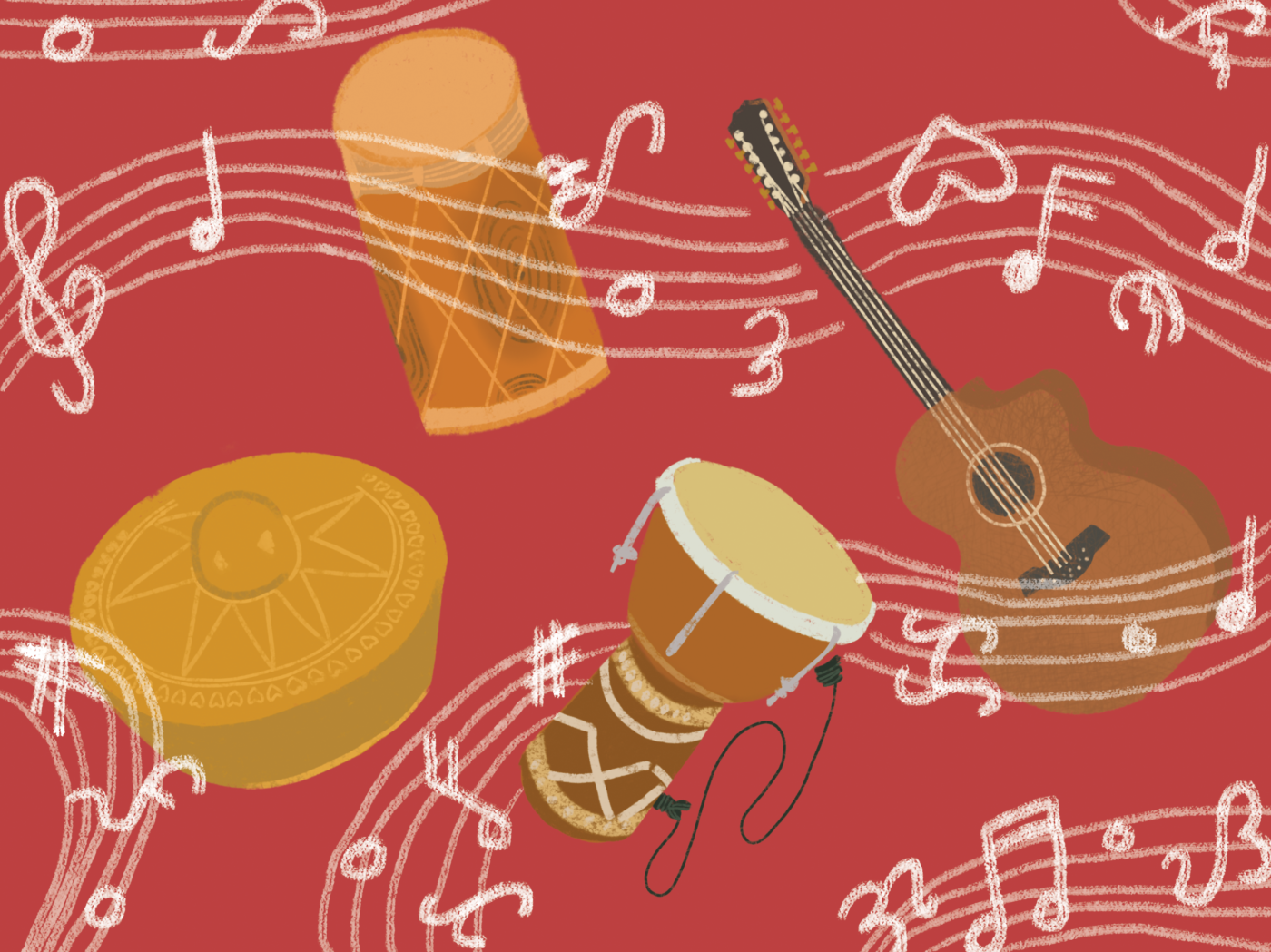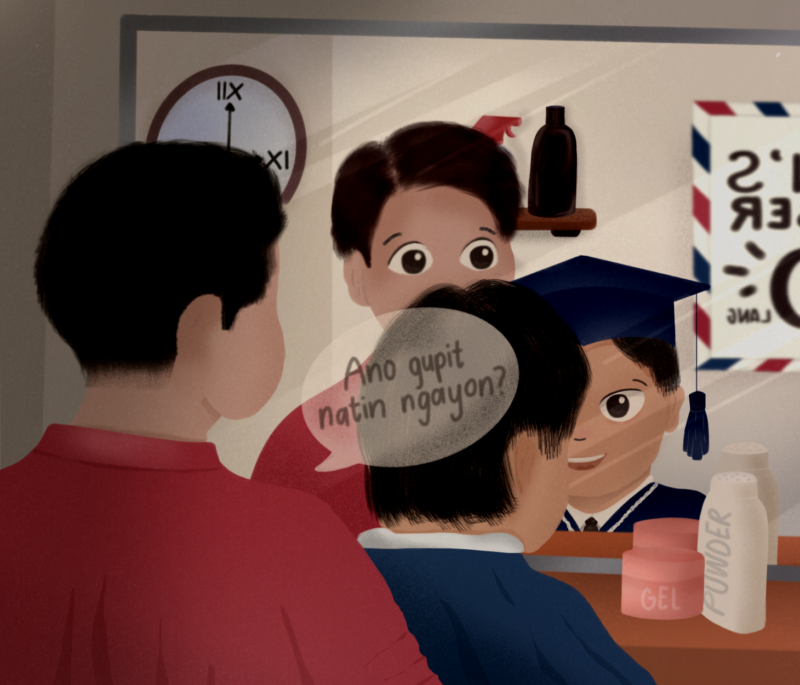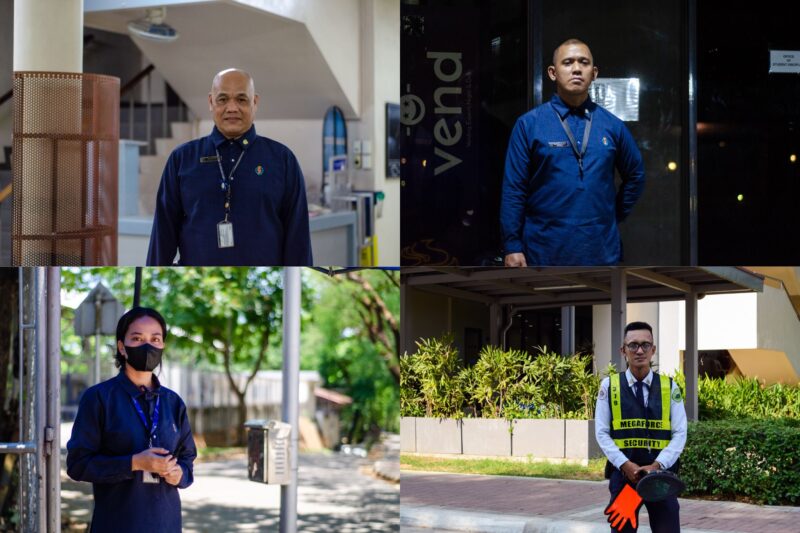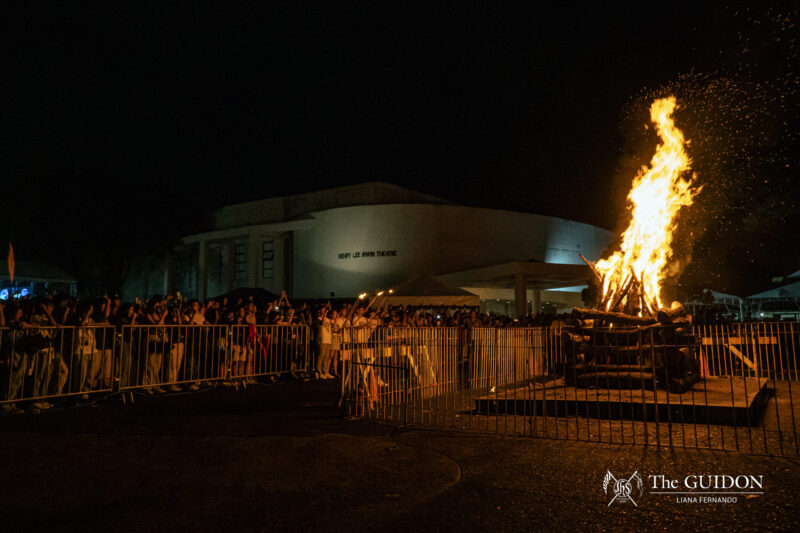Among other things, when we speak of Filipino culture, we see sinigang (whether ironically or not), we are reminded of the concept of the so-called bayanihan, and we think of beaches we hope to preserve for posterity. Our culture, however, is not always pure and absolute: it is a fusion of several influences that are seen and felt through practice, objects, and traditions.
In the realm of music, folk is historically described and valued as an ancient genre sung by our ancestors for pasyon, ethnic dances, serenades, and for personal times of mourning or joy. Today, local folk musicians such as Alpas and Slow Sink are redefining the genre for contemporary times.
Alpas, a folk group consisting of eight members, prides themselves in using a variety of musical instruments from different cultures around the world to create an eclectic Filipino sound. On the other hand, Slow Sink, a solo project started by Mark Armas early in 2014, boasts captivating melodies accompanied by melancholic but straightforward lyrics.
Through artists like them, contemporary Philippine folk music keeps a valuable local tradition alive while keeping doors open for new subgenres in local music.
The folk identity
Perhaps one of the most remarkable characteristics of folk music is its ability to reflect a nation’s historic past. Since the Philippines is a nation embedded with different cultures, Philippine folk music, in itself, already possesses diversity in theme and execution that can even be classified into categories according to influence. For instance, traditional Tagalog music significantly differs from the folk music of Ifugaos, and more significantly from that of Mindanao. In the same way, Christian folk music, which is embedded with Spanish culture, differs from Muslim folk and the music of other indigenous tribes.
While there are no sufficient historical accounts of pre-Hispanic Filipino music, indigenous tribes show evidence of a pre-existing unique form of folk music that could be easily recognized through the presence of percussion, wind, and string instruments. Music at that time had a role in the early Filipinos’ everyday life and, as reported by friars and travelers, can be classified into vocal and instrumental. Vocal folk music told of stories of gods and heroes and of the average person’s work. There were also those that depict rituals against evil spirits and invocations of blessings for prosperity.
As opposed to the melodic nature of Western folk music and other Asian folk music, the instrumental form of Philippine folk music, back then, puts more emphasis on beats than the progression of melodies. It can often stand with only percussion and wind instruments, most of which are made out of bamboo.
Due to years of colonization, the music of the Philippines became heavily influenced by the music of other countries, giving birth to Christianized versions of folk music. Now, the music in the Philippines has constantly been adapting the dominant genres of this generation like pop, alternative, and rap. Some bands and artists in the country have also been incorporating folk and its elements into their art.
Into the folk mind
A big part of Alpas’ humble beginnings could be credited to the eclectic mind of their lead vocalist and percussionist, Box Seblario. Previously working in the film industry, he began seeking for other outlets for expression, eventually composing his own songs.
Pursuing this newfound urge to create music, he let his friend listen to his first composition, and together eventually they formed Alpas. “Noong tumagal, ‘yung community namin ng mga [artista] na may mga dancers [at] folk singers, nagsama-sama,” he says.
(As time passed, our community of artists consisting of dancers and folk singers came together.)
Seblario continues by talking about his own songwriting process and inspirations, with most of which coming from his own interactions with communities and events surrounding him. He recalls how one of his compositions was inspired by a gathering of indigenous tribes he had stumbled upon in Baguio City. There they spoke out about the problems their communities faced. “Dahil doon, nakasulat ako ng isang kanta. ‘Yung creative process doon, kumbaga, na-affect [ako] nung community and then naisulat [ko] ,” he says.
(Because of that event, I was able to write a song. The community affected me, and that was a part of my creative process.)
On the other hand, Armas had originally performed with a blues rock band in his early stages as a musician. Eventually, he took a turn into folk and started creating his own compositions. Armas’ diversion into folk left him to change his sound and find his voice as a solo artist. “There’s something about the simplicity and rawness of folk that always attracted me to it. It’s also a kind of music that lets me express my thoughts and feelings in its most bare and vulnerable form,” he explains.
The folk-alternative artist also described the impact folk performances can leave its audience. “Especially in a quiet and intimate venue or space, this live exchange between the musician and listener is such a pure and special experience to have. There’s nothing else like it,” he adds.
Having been inspired by folk legends such as Bob Dylan, James Taylor, and Simon & Garfunkel, Armas explains that his compositions tend to be straightforward and not deeply poetic in nature. He also explains that his music, along with other local folk musicians are heavily influenced by Western artists in terms of writing and style, as opposed to traditional forms of folk.
A steady beat
Until today, in the age of live gigs and online performances, folk music’s echoes are still heard and kept alive. Like Alpas, several bands that are considered to be in the folk genre like Slow Sink appeals to listeners across generations.
Seblario says that there is value in the rarity of today’s folk music. “I guess kaya siya naging appealing, kasi ‘yung mismong mga tumutugtog, ‘yung mismong band, [ay] mga bata (It’s appealing because of the performers themselves. The band members themselves are young).”
“Nagugulat sila na meron pa palang ganun na tumutugtog na mga bata, mga nasa 20s. Kumbaga, parang bihira na yung ganun (Audiences are surprised that there are young musicians in their 20s. In other words, it’s rare),” he says.
For Slow Sink, the ability to share stories and the intimacy with the audience are what makes the genre so appealing today. “With a clear voice and guitar, folk artists can already effectively share their stories with the audience,” says Armas.
The future of folk music may also be seen in hybrids of several genres like pop, indie, and jazz. Seblario shares how they collaborate with other local musicians like Jackie Tan, who does jazz and ethnic music, and then combines Alpas’ folk music with hers. In some instances, Alpas is also able to create a fusion of folk and rock into their pieces. Slow Sink, on the other hand, would add elements of rock and alternative music to his sound to “make it more dynamic.”
“Genre trends come and go,” says Armas, “but I definitely think [folk music] has been more desirable now than it was five to ten years ago. We can see this with the success of artists like 3D (Danao, Dancel, Dumas), Reese Lansangan, Munimuni, The Ransom Collective, [and] Ben&Ben. So there’s definitely an ever-growing following for folk-music and acoustic performers.”
The hope for the future of Philippine folk music is its continuous presence throughout different generations, and even beyond the local setting. Seeing how the genre can bleed into different genres and also maintain a steady audience today, folk music’s life only keeps prolonging as it grows.
Illustration by Cara L. Padilla and Nicola E. Roxas.







